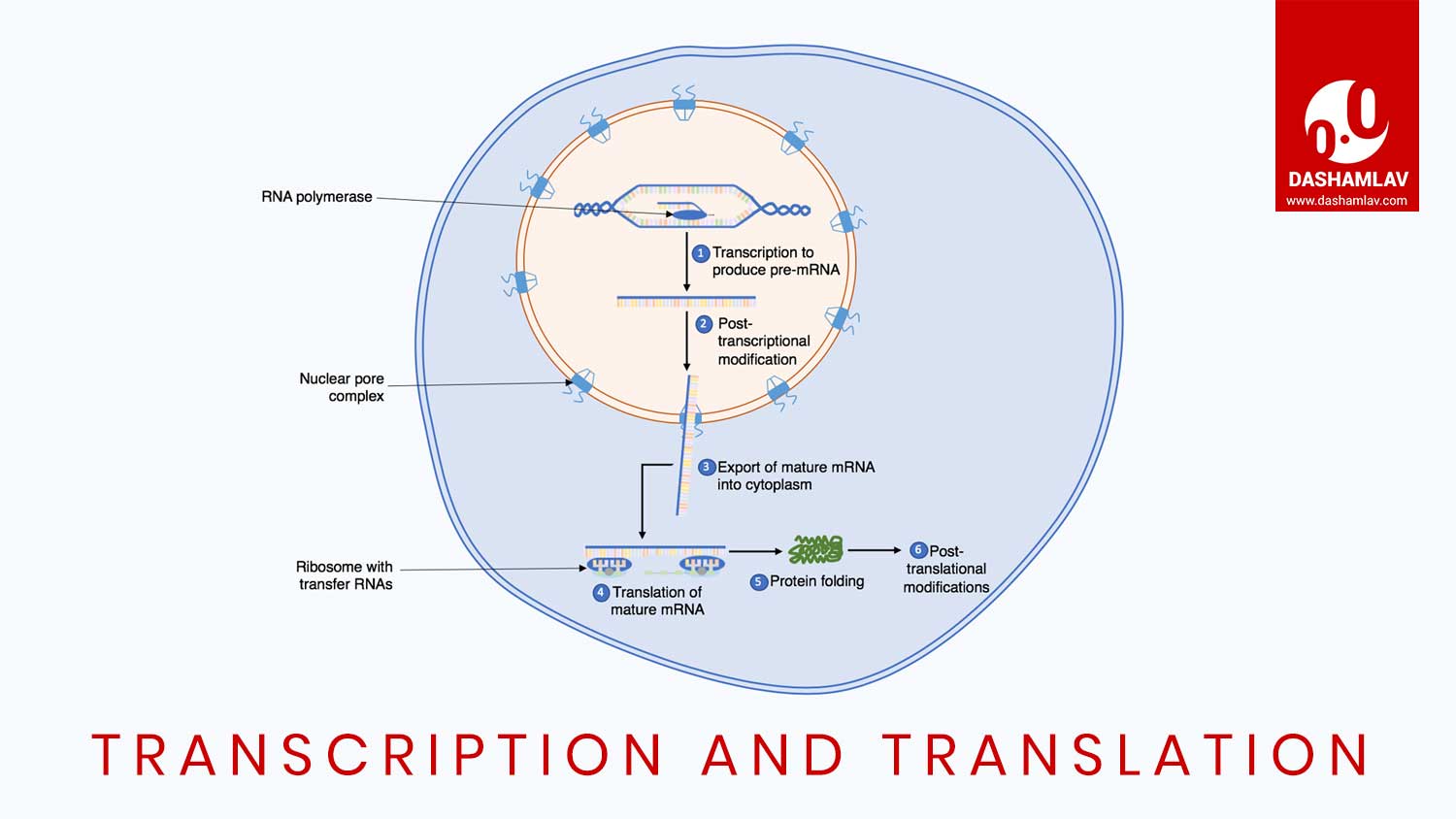Transcription and Translation are both essential processes for life — both for eukaryote as well as prokaryote organisms. Life on earth is in existence for billions of years because these two processes together convert genetic information into proteins. Transcription and Translation utilize the information provided by genes to build proteins. These processes achieve this by converting a sequence of nucleotides from DNA into a sequence of amino acids to build the desired protein. Both these processes are complementary to each other. While transcription uses a strand of DNA as a template to build RNA, the translation uses the produced RNA to deliver information to the protein-building machines.
What is Transcription?
Transcription is a process that uses a series of polymerization reactions to transfer information on a DNA strand into an RNA strand. The process is catalyzed by enzyme called DNA-dependent RNA polymerases. Transcription is the first step involved in the process of gene expression. It is a prerequisite of translation and takes place when there is a need for a particular gene product for a specific tissue at any given time.
Transcription takes information from one strand of DNA, called the template strand, and replicates it to form single-stranded messenger RNA (mRNA).
What is Translation?
Translation is the process that utilizes the genetic information embedded in an RNA to synthesize proteins (polypeptide chains). It is the successive step after transcription in the process of gene expression. Translation utilizes the mRNA formed as a result of transcription to produce the amino acid sequence. The process requires a number of enzymes to control and catalyze the process including the most important amino acetyl tRNA synthetase.
Differences between Transcription and Translation
The following table provides the differences between Transcription and Translation.
| S. No. | Basis of Difference | Transcription | Translation |
|---|---|---|---|
| 1. | Definition | Transcription is the process that utilizes genetic information from DNA to produce several forms of functional RNA including mRNA. | The translation is the process of synthesis of the desired protein from an mRNA template. |
| 2. | Purpose | Purpose of transcription is to create RNA copies of individual genes to be utilized by cells for gene expression. | Purpose of translation is to synthesize protein by utilizing the information from mRNA. These synthesized proteins are utilized by cells for millions of purposes. |
| 3. | Synthesis of | The transcription process results in the synthesis of RNA sequences including mRNA, tRNA, rRNA, and other non-coding RNA-like microRNAs. | The translation process results in the synthesis of proteins. |
| 4. | Location | The process of transcription takes place in the nucleus of the eukaryotes. As the nucleus is absent in prokaryotes the process takes place in the cytoplasm. | The process of translation in eukaryotes takes place in ribosomes, the factory for protein synthesis. And, in the case of prokaryotes, the process occurs in the cytoplasm. |
| 5. | Gene Expression Relation | Transcription is the first step of the process of gene expression. It is a prerequisite to translation. | The translation is the second and final step of gene expression. It occurs after transcription. |
| 6. | Precursor | The precursor for transcription is the non-coding and anti-sense DNA strand. | The precursor for translation is the mRNA produced by transcription. |
| 7. | Raw Material | The raw materials required for transcription include the four base pairs of RNA – adenine, guanine, uracil, and cytosine. | The raw materials required for translation are the twenty amino acids. |
| 8. | Initiation | The process of transcription initiates or begins with the recognition of a specific DNA sequence called the promoter sequence. This step signifies not only the beginning of transcription but the beginning of genes. | The process of translation initiates or begins with the binding of mRNA. |
| 9. | Products | mRNA molecule which is complementary to the DNA strand is the product of transcription. | Peptide sequence encoded from mRNA sequence is the product of the process of translation. |
| 10. | Controller and catalyzer | The major enzyme that controls and catalyzes transcription is DNA-dependent RNA polymerase. | The major enzyme that controls and catalyzes translation is aminoacetyl tRNA synthetase. |
| 11. | Detection | Process of transcription is detected by methods like RT-PCR, DNA microarray, northern blotting, and in-situ hybridization. | Process of translation can be detected by various methods including immunoblotting, western blotting, protein sequencing, enzyme assay, etc. |
Use the citation below to add this article to your bibliography
"Transcription vs. Translation: Major Differences." Dashamlav.com. Web. 11 June 2025. <https://dashamlav.com/transcription-vs-translation/>
Dashamlav.com, "Transcription vs. Translation: Major Differences." Accessed 11 June 2025. https://dashamlav.com/transcription-vs-translation/
"Transcription vs. Translation: Major Differences." (n.d.). Dashamlav.com. Retrieved 11 June 2025 from https://dashamlav.com/transcription-vs-translation/

